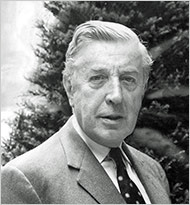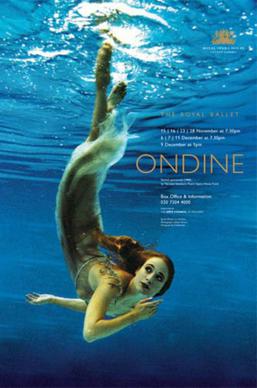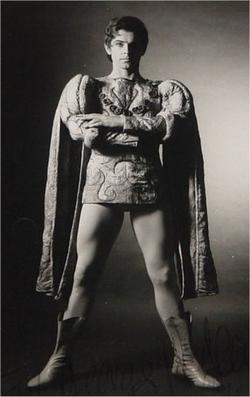Related Research Articles

Sir Frederick William Mallandaine Ashton was a British ballet dancer and choreographer. He also worked as a director and choreographer in opera, film and revue.

Dame Margaret Evelyn de Arias DBE, known by the stage name Margot Fonteyn, was an English ballerina. She spent her entire career as a dancer with the Royal Ballet, eventually being appointed prima ballerina assoluta of the company by Queen Elizabeth II.

The Royal Ballet is a British internationally renowned classical ballet company, based at the Royal Opera House in Covent Garden, London, England. The largest of the five major ballet companies in Great Britain, the Royal Ballet was founded in 1931 by Dame Ninette de Valois. It became the resident ballet company of the Royal Opera House in 1946, and has purpose-built facilities within these premises. It was granted a royal charter in 1956, becoming recognised as Britain's flagship ballet company.

Dame Beryl Elizabeth Grey was a British ballet dancer.
Nadia Nerina was a South African dancer who was "one of the most gifted, versatile, and inspiring ballerinas of The Royal Ballet" during the 1950s and 1960s. She was known "for her technical virtuosity, lightness afoot, effortless-seeming jumps, and joyful charm onstage, especially in comedic roles."

Robert Augustine Irving, DFC*, was a British conductor whose reputation was mainly as a ballet conductor.

Ondine is a ballet in three acts created by the choreographer Sir Frederick Ashton and composer Hans Werner Henze. Ashton originally produced Ondine for the Royal Ballet in 1958, with Henze commissioned to produce the original score, published as Undine, which has since been restaged by other choreographers. The ballet was adapted from a novella titled Undine by Friedrich de la Motte Fouqué and it tells the tale of a water nymph who is the object of desire of a young prince named Palemon. The première of the ballet took place at the Royal Opera House, London, on 27 October 1958, with the composer as guest conductor. The first major revival of this Ashton/Henze production took place in 1988.
Maryon Lane was a South African ballet dancer who became well known in Britain as a ballerina of the Sadler's Wells Theatre Ballet and as a soloist with the Royal Ballet.
Les Rendezvous is a plotless one-act ballet created in 1933, with choreography by Frederick Ashton to the music of Daniel Auber arranged by Constant Lambert and with designs by William Chappell. It was the first major ballet created by Ashton for the Vic-Wells company.
Alexander Marshall Grant was a New Zealand ballet dancer, teacher, and company director. After moving to London as a young man, he became known as "the Royal Ballet's most remarkable actor-dancer in its golden period from the 1940s to the 1960s."

Pamela May OBE was a Trinidad-born British dancer and teacher of classical ballet. Most noted as one of the earliest members of The Royal Ballet, she was regarded as a versatile dancer; dancing all the established 19th-century classical repertoire, and creating roles in new ballets by Ninette de Valois and Frederick Ashton. After retiring from professional ballet, she became a teacher at the Royal Ballet School, and also served as vice-president of the Royal Academy of Dance.
June Brae was a British ballet dancer, who created leading roles for Frederick Ashton, Ninette de Valois and other choreographers.

Derek Rencher was a British ballet dancer. A commanding figure among Royal Ballet character dancers for more than four decades, he was probably the most prolific performer in the company's history.
William Chappell was a British dancer, ballet designer and director. He is most noted for his designs for more than 40 ballets or revues, including many of the early works of Sir Frederick Ashton and Dame Ninette de Valois.
Symphonic Variations is a one-act ballet by Frederick Ashton set to the eponymous music of César Franck. The premiere, performed by the Sadler's Wells Ballet, took place at the Royal Opera House, Covent Garden, on 24 April 1946 in a triple bill; the other works were Ashton's Les Patineurs and Robert Helpmann's Adam Zero. The ballet was conducted by Constant Lambert and the set designed by Sophie Fedorovitch.
Harold Turner was an English ballet dancer, teacher, and ballet master. Widely recognized as "modern British ballet's first male virtuoso," he had an illustrious career as a principal dancer, after which he continued to perform in character roles. He is acknowledged as a key figure in British dance history.
Alexis Rassine was a South African ballet dancer who enjoyed his greatest success with the Sadler's Wells Ballet in England in the 1940s and early 1950s. He is remembered as a classical dancer who made "a major contribution to British ballet" during wartime and "helped to keep the flag flying when all about was chaos and disaster."
Brian Shaw was a British ballet dancer and teacher. As a leading dancer with the Royal Ballet during the 1950s and 1960s, he was widely regarded as "one of the finest classical male dancers of his generation".
Tiresias is a ballet in a prelude and three acts choreographed by Frederick Ashton to an original score by Constant Lambert. With scenery and costumes designed by the composer's wife Isabel Lambert, it was first presented by the Royal Ballet at the Royal Opera House Covent Garden, London, on 9 July 1951.
References
- ↑ Alexander Bland, The Royal Ballet: The First Fifty Years (London: Threshold Books,1981).
- ↑ Julie Kavanaugh, Secret Muses: The Life of Frederick Ashton (London: Faber & Faber, 1996), pp. 197–98.
- ↑ David Vaughan, Frederick Ashton and His Ballets, revised edition (London: Dance Books, 1999), p. 485.
- ↑ Debra Craine and Judith Mackrell, "Lambert, Constant," in The Oxford Dictionary of Dance (Oxford University Press, 2000), p. 285.
- ↑ Kavanaugh, Secret Muses (1996), p. 198.